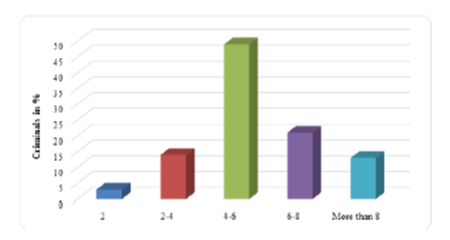
Geographical analysis
Department of Geography & GIS

Department of Geography & GIS

Geographical analysis
Year: 2019, Volume: 8, Issue: 1, Pages: 17-23
Original Article
P Mary Santhi1, S Balaselvakumar2, K Kumaraswamy3
1Research Scholar, Department of Geography, Periyar E.V.R. College (Autonomous), (Affiliated to Bharathidasan University), Tiruchirappalli, 620023, India
2Assistant Professor & ICSSR Senior Fellow & Emeritus Professor, Department of Geography, Periyar E.V.R. College (Autonomous), (Affiliated to Bharathidasan University), Tiruchirappalli, 620023, India
3Department of Geography, Bharathidasan University, Tiruchirappalli, 620024, India
Received Date:12 January 2019, Accepted Date:23 April 2019
This article is an attempt to study the socio-economic characteristics of criminals in Tiruchirappalli city like the investigation of family size of the criminals, residential location, gender, age, religions, education, occupation, income and motivation of crimes. The socioeconomic characteristics reveal that 84% of the criminals were in the age group of 20 years and above, 50% of the criminals indulged in criminal activity for 2- 4 years, thieves and automobile thieves were high with 43% while motives of criminals were drinking, drug-habits and thirst for leading a luxurious life with 54.3%. Moral education with the co-operation of parents, counselling and guidance by social reformers and psychiatrists will help the criminals to improve their characters and change their behaviour which will in return reduce the occurrence of crimes of various types.
Keywords: Criminals; Socioeconomic characteristics; Crime occurrences Moral education; counselling
© 2019 Santhi et al. This is an open-access article distributed under the terms of the Creative Commons Attribution License, which permits unrestricted use, distribution, and reproduction in any medium provided the original author and source are credited.
Published By Bangalore University, Bengaluru, Karnataka
Subscribe now for latest articles and news.